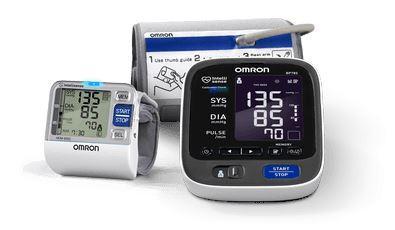High blood pressure, or hypertension, is often called the "silent killer" because people can have it without even realizing it. Hypertension can cause many complications, which is why it is important that you to frequently check the state of the pressure of your blood. You can purchase one of a variety of home monitors to keep an eye on it, many of which are very easy to read and can warn you if something is out of the ordinary. While hypertension can be a life-threatening condition, keeping track of the pressure of your blood can help you regulate it and avoid any dangers that may accompany it. Because there are so many health risks that can come along with hypertension, it is important to know what it is and that you get it checked regularly.
What Is Blood Pressure?
The force of blood against your arteries determines how high or low your blood pressure is. Systolic pressure is the pressure exerted when your heart contracts while diastolic pressure, the lower of the two, is the pressure on your arteries when your heart is at rest. It is important for individuals to avoid hypertension, because it makes the heart work harder, can contribute to the hardening of arteries, and can be life-threatening if the heart fails.
What Causes Hypertension?
There are many risks that can cause hypertension even though many cases have an unknown cause. These factors that can contribute to complications include obesity, smoking, stress, alcohol, salt, genetics, lack of exercise, age, kidney disease, and other disorders. However, if caught, hypertension can be treated with medications and can be regulated with a proper diet. It is recommended that people at risk test themselves at least once a week to remain healthy, to avoid complications, and to keep track of any changes in the body.
What's Too High?
The pressure of blood in a healthy individual is usually around 120/80, but can be lower and still be considered healthy. It becomes dangerous when your diastolic pressure, the bottom number, is above 90 or if the systolic pressure, the top number, is more than 160. If the pressure of your blood is high, it is recommended that you consult a doctor to get help lowering it. They may be able to prescribe medicine and give you advice and tips to help you stay healthy. Purchase blood pressure monitors at saveritemedical.com.
Sources
American Journal of Hypertension
Journal of Hypertension and Management
Hypertension: Pathophysiology and Treatment


